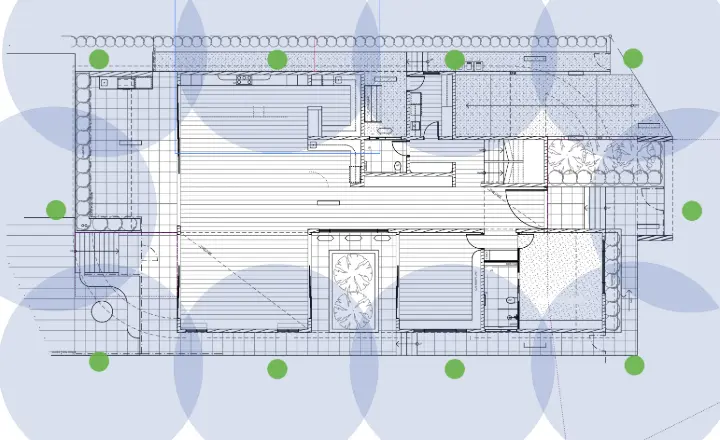Termite Baiting Alternative
Robust reliable perimeter protection

NCC 2022 Volume 2
Area of NCC Requirements:
- QLD H1P3 – Termite Management Measures
- ABCB Part 3.4 – Termite Risk Management
The Challenge
Queensland is one of the most termite-prone regions in Australia, with warm and humid conditions creating the perfect environment for subterranean colonies. The NCC recognises this risk by requiring that Class 1 and 10 buildings incorporate termite management systems that safeguard structural elements for the life of the building.
Traditionally, compliance is achieved through physical barriers such as stainless steel mesh or chemical soil treatments. But when a dwelling is already built—particularly with complex elements like blockwork basements or suspended slabs—these Deemed-to-Satisfy (DTS) solutions are often impossible to retrofit. That’s when performance solutions come into play.

What This Really Means
The intent of the code is clear: primary building elements must be protected from termite damage for decades, and homeowners must have a reliable way of detecting and managing any termite activity before it compromises the structure.
The challenge is that DTS methods rely heavily on continuity—if a barrier is bridged, degraded, or disturbed, the protection is compromised. In practice, this can happen through landscaping, site settlement, or just normal wear over time.
In Queensland’s conditions, this makes a dynamic system—one that not only blocks termites but also detects and actively reduces colonies—more suited to the long-term realities of building performance.
The Solution
A tailored performance pathway was developed using the termite baiting system. This system operates as a perimeter network of in-ground stations designed to both intercept foraging termites and eliminate colonies using a chitin synthesis inhibitor.
The performance solution demonstrated that:
- Detection and monitoring are superior to DTS.
- Colony suppression and elimination reduce overall termite pressure on the property.
- Maintenance and certification are built into the system, with annual inspections and compliance certificates from licensed pest managers, ensuring ongoing verification that protection remains in place.
By combining expert judgement, comparison with DTS provisions, and evidence of suitability, the solution showed that the system didn't 'white ant' the requirements of the NCC but provided protection equal to, and in many respects better than, the prescriptive measures.

Why This Matters
For Queensland builders, designers, and homeowners, rigid DTS barriers are not always practical or effective—especially in existing dwellings or complex construction types. Performance-based termite systems allow for smarter, more adaptable solutions that align with the intent of the NCC while delivering better long-term results.
Performance Solutions Australia helps navigate this process, ensuring that termite management is not just about compliance but about delivering real, durable protection against one of the most destructive threats to Australian homes.
Don’t let termites undermine your next project.
Reach out to our team for the solution.